At BestGunDogs.com, we continually focus on foundational training techniques essential for developing obedient and efficient hunting dogs. Building on our previous discussion about the 'Come, Go With Me' drill, today we turn our attention to the heel command, a pivotal part of our training program.
Transitioning from 'Come, Go With Me' to 'Heel'
The heel command naturally follows the 'Come, Go With Me' drill, where the dog learns to respond to cues while moving in a zigzag pattern through the field. After about ten days of mastering these initial movements and cues, transitioning to heel becomes a smoother process..
Setting Up the Heel Drill
To start, you'll need a quiet, distraction-free area such as an open parking lot. Here's how to set up your training space and what you'll need:
- Location: Choose an area with minimal distractions — no other dogs, cars, or people.
- Equipment: Use a leather training collar and a short check cord, about a foot long, to enhance communication and control.
Key Steps in Heel Training
- Maintain a Straight Line: With the check cord and collar in place, walk in a straight line, keeping your head up and your body energy forward. It’s crucial to maintain a consistent pace without stopping.
- Nonverbal Commands: Initially, use nonverbal cues exclusively. If your dog moves ahead, gently tug the check cord to correct their position. Imagine the check cord as a gear shift that helps you communicate directional changes and pace adjustments.
- Consistent Pace: Keeping a steady pace helps the dog learn faster. Continuously moving your feet without pausing will reinforce the desired behavior.
Why Nonverbal Communication is Key
In the early stages of heel training, verbal commands can often confuse a dog. By relying on the physical cues provided through the check cord, you allow the dog to focus entirely on your movement and body language. This method enhances the dog’s ability to synchronize their movement with yours, maintaining their position ideally at your side, with their ear at your kneecap level.
Tips for Successful Heel Training
- Visual Focus: Keep looking forward rather than at your dog. This helps reinforce the forward motion and direction you expect your dog to follow.
- Feel the Movement: Learn to feel where your dog is through the check cord's feedback. This will help you adjust your cues subtly and effectively.
- Practice Makes Perfect: Regular practice is essential. Consistency in training sessions builds and reinforces the correct behavior.
Conclusion: Building a Solid Foundation
The heel command is more than just a training exercise; it is a crucial component of building a reliable and responsive hunting partner. By starting with foundational drills like 'Come, Go With Me' and progressing to heel, you lay the groundwork for a disciplined and effective gun dog.
Stay Connected
For more tips, or if you have any questions, feel free to drop us a DM or an email at bestgundogs.com. Follow us on Instagram at @bestgundogs for more updates and interactive content. We're here to help you achieve the best from your hunting companion!
By integrating these strategies into your training routine, you will enhance your dog’s performance and foster a strong, intuitive bond that is essential for fieldwork. Keep training, and keep progressing with BestGunDogs.com!



